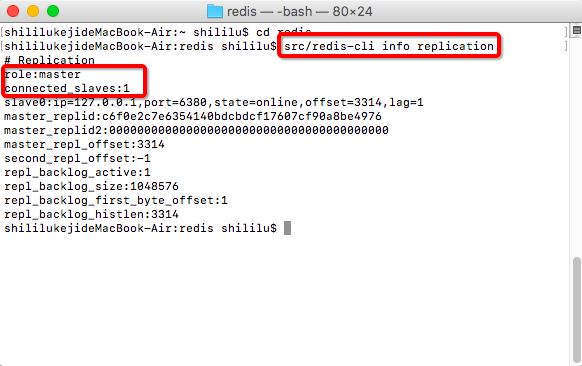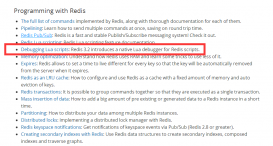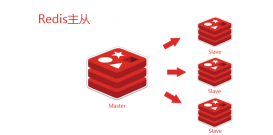Redis中双链表实现的基本结构:
1.节点结构
|
1
2
3
4
5
|
typedef struct listNode { struct listNode *prev; //前向节点 struct listNode *next; //后向节点 void *value; //该节点的值} listNode; |
2.双向链表结构
|
1
2
3
4
5
6
7
8
|
typedef struct list { listNode *head; //头节点 listNode *tail; //尾节点 void *(*dup)(void *ptr); //复制函数 void (*free)(void *ptr); //释放函数 int (*match)(void *ptr, void *key); //匹配函数,查找节点使用 unsigned long len; //双向链表的长度即节点的个数} list; |
3.双向链表遍历器
|
1
2
3
4
5
6
7
8
9
|
typedef struct listIter { listNode *next; //下一个节点 int direction;} listIter; 方向定义 #define AL_START_HEAD 0 //向前查找 #define AL_START_TAIL 1 //向后查找 |
4.宏定义函数
|
1
2
3
4
5
6
7
8
9
10
11
12
13
14
|
#define listLength(l) ((l)->len)#define listFirst(l) ((l)->head)#define listLast(l) ((l)->tail)#define listPrevNode(n) ((n)->prev)#define listNextNode(n) ((n)->next)#define listNodeValue(n) ((n)->value)#define listSetDupMethod(l,m) ((l)->dup = (m))#define listSetFreeMethod(l,m) ((l)->free = (m))#define listSetMatchMethod(l,m) ((l)->match = (m))#define listGetDupMethod(l) ((l)->dup)#define listGetFree(l) ((l)->free)#define listGetMatchMethod(l) ((l)->match) |
5.定义函数
|
1
2
3
4
5
6
7
8
9
10
11
12
13
14
15
16
17
18
19
20
21
22
23
24
25
26
27
28
29
30
31
32
33
34
35
36
37
38
39
40
41
42
43
44
45
46
47
48
49
50
51
52
53
54
55
56
57
58
59
60
61
62
63
64
|
list *listCreate(void); //创建一个新的链表。该链表可以使用AlFree()方法释放。 //但使用AlFree()方法前需要释放用户释放私有节点的值。 //如果没有创建成功,返回null;创建成功则返回指向新链表的指针。void listRelease(list *list); //释放整个链表,此函数不会执行失败。调用zfree(list *list)方法,定义在Zmalloc.c中。list *listAddNodeHead(list *list, void *value); //向链表头部中增加一个节点list *listAddNodeTail(list *list, void *value); //向链表尾部增加一个节点list *listInsertNode(list *list, listNode *old_node, void *value, int after);//向某个节点位置插入节点 after为方向void listDelNode(list *list, listNode *node);//从链表上删除特定节点,调用者释放特定私用节点的值。 //该函数不会执行失败listIter *listGetIterator(list *list, int direction);//返回某个链表的迭代器。 //迭代器的listNext()方法会返回链表的下个节点。direction是方向 //该函数不会执行失败。listNode *listNext(listIter *iter); void listReleaseIterator(listIter *iter); //释放迭代器的内存。list *listDup(list *orig); //复制整个链表。当内存溢出时返回null,成功时返回原链表的一个备份 //不管该方法是否执行成功,原链表不会改变。listNode *listSearchKey(list *list, void *key); //从特定的链表查找key。成功则返回第一个匹配节点的指针 //如果没有匹配,则返回null。listNode *listIndex(list *list, long index); //序号从0开始,链表的头的索引为0.1为头节点的下个节点。一次类推。 //负整数用来表示从尾部开始计数。-1表示最后一个节点,-2倒数第二个节点 //如果超过链表的索引,则返回nullvoid listRewind(list *list, listIter *li) { li->next = list->head; li->direction = AL_START_HEAD;}void listRewindTail(list *list, listIter *li) { li->next = list->tail; li->direction = AL_START_TAIL;}void listRotate(list *list); //旋转链表,移除尾节点并插入头部。 |
list结构和listNode结构的API
list和listNode都有它们自己的一族API,这里贴出来学习一下redis的源码(ps:下面的代码都是我仿照redis改写能直接编译运行的代码)
list *listCreate(void)
|
1
2
3
4
5
6
7
8
9
10
11
12
13
14
15
16
17
18
19
20
21
22
23
|
/** * 创建一个新列表 * * T = O(1) */ list *listCreate(void) { struct list *list; // 为列表结构分配内存 list = (struct list *)malloc(sizeof(struct list)); if (list == NULL) return NULL; // 初始化属性 list->head = list->tail = NULL; list->len = 0; list->dup = NULL; list->free = NULL; list->match = NULL; return list; } |
void listRelease(list *list)
|
1
2
3
4
5
6
7
8
9
10
11
12
13
14
15
16
17
18
19
20
21
22
23
|
/** * 释放整个列表 * * T = O(N), N为列表长度 */void listRelease(list *list) { unsigned long len; listNode *current, *next; current = list->head; len = list->len; while (len --) { next = current->next; // 如果列表有自带的free方法,那么先对节点值调用它 if (list->free) list->free(current->value); // 之后释放节点 free(current); current = next; } free(list); } |
list *listAddNodeHead(list *list, void *value)
|
1
2
3
4
5
6
7
8
9
10
11
12
13
14
15
16
17
18
19
20
21
22
23
24
25
26
27
28
29
30
31
|
/** * 新建一个包含给定value的节点,并将它加入到列表的表头 * * T = O(1) */list *listAddNodeHead(list *list, void *value) { listNode *node; node = (listNode *)malloc(sizeof(listNode)); if (node == NULL) return NULL; node->value = value; if (list->len == 0) { // 第一个节点 list->head = list->tail = node; node->prev = node->next = NULL; } else { // 不是第一个节点 node->prev = NULL; node->next = list->head; list->head->prev = node; list->head = node; } list->len ++; return list; } |
list *listAddNodeTail(list *list, void *value)
|
1
2
3
4
5
6
7
8
9
10
11
12
13
14
15
16
17
18
19
20
21
22
23
24
25
26
27
28
29
|
/** * 新建一个包含给定value的节点,并把它加入到列表的表尾 * * T = O(1) */list *listAddNodeTail(list *list, void *value) { listNode *node; node = (listNode *)malloc(sizeof(listNode)); if (node == NULL) return NULL; if (list->len == 0) { // 第一个节点 list->head = list->tail = node; node->prev = node->next = NULL; } else { // 不是第一节点 node->prev = list->tail; node->next = NULL; list->tail->next = node; list->tail = node; } list->len ++; return list; } |
list *listInsertNode(list *list, listNode *old_node, void *value, int after)
|
1
2
3
4
5
6
7
8
9
10
11
12
13
14
15
16
17
18
19
20
21
22
23
24
25
26
27
28
29
30
31
32
33
34
35
36
37
38
39
40
41
42
43
44
45
|
/** * 创建一个包含值value的节点 * 并根据after参数的指示,将新节点插入到old_node的之前或者之后 * * T = O(1) */list *listInsertNode(list *list, listNode *old_node, void *value, int after) { listNode *node; node = (listNode *)malloc(sizeof(listNode)); if (node == NULL) return NULL; if (after) { // 插入到old_node之后 node->prev = old_node; node->next = old_node->next; // 处理表尾节点 if (list->tail == old_node) { list->tail = node; } } else { // 插入到old_node之前 node->next = old_node; node->prev = old_node->prev; // 处理表头节点 if (list->head == old_node) { list->head = node; } } // 更新前置节点和后继节点的指针(这个地方很经典,节约代码) if (node->prev != NULL) { node->prev->next = node; } if (node->next != NULL) { node->next->prev = node; } // 更新列表节点 list->len ++; return list; } |
void listDelNode(list *list, listNode *node)
|
1
2
3
4
5
6
7
8
9
10
11
12
13
14
15
16
17
18
19
20
21
22
23
24
25
26
27
28
29
30
|
/** * 释放列表中给定的节点 * * T = O(1) */ void listDelNode(list *list, listNode *node) { // 处理前驱节点指针 if (node->prev) { node->prev->next = node->next; } else { list->head = node->next; } // 处理后继节点 if (node->next) { node->next->prev = node->prev; } else { list->tail = node->prev; } // 释放节点值 if (list->free) list->free(node->value); // 释放节点 free(node); // 更新列表节点数目 list->len --; } |
迭代器
其实我对迭代器的概念非常陌生,因为我是纯c程序员,不会c++,这里直接跟着学了!
Redis针对list结构实现了一个迭代器,用于对链表进行遍历
迭代器的结构定义如下:
|
1
2
3
4
5
6
7
8
9
10
|
/** * 链表迭代器 */typedef struct listIter { // 下一节点 listNode *next; // 迭代方向 int direction; } listIter; |
direction决定了迭代器是沿着next指针向后迭代,还是沿着prev指针向前迭代,这个值可以是adlist.h中的AL_START_HEAD常量或AL_START_TAIL常量:
|
1
2
|
#define AL_START_HEAD 0 #define AL_START_TAIL 1 |
学习一下迭代器的api实现:
listIter *listGetIterator(list *list, int direction)
|
1
2
3
4
5
6
7
8
9
10
11
12
13
14
15
16
17
18
19
20
21
22
23
24
25
26
27
|
/** * 创建列表list的一个迭代器,迭代方向由参数direction决定 * * 每次对迭代器listNext(),迭代器返回列表的下一个节点 * * T = O(1) */listIter *listGetIterator(list *list, int direction) { listIter *iter; iter = (listIter *)malloc(sizeof(listIter)); if (iter == NULL) return NULL; // 根据迭代器的方向,将迭代器的指针指向表头或者表尾 if (direction == AL_START_HEAD) { iter->next = list->head; } else { iter->next = list->tail; } // 记录方向 iter->direction = direction; return iter; } |
void listRewind(list *list, listIter *li)
|
1
2
3
4
5
6
7
8
9
10
|
/** * 将迭代器iter的迭代指针倒回list的表头 * * T = O(1) */void listRewind(list *list, listIter *li) { li->next = list->head; li->direction = AL_START_HEAD; } |
void listRewindTail(list *list, listIter *li)
|
1
2
3
4
5
6
7
8
9
10
|
/** * 将迭代器iter的迭代指针倒回list的表尾 * * T = O(1) */void listRewindTail(list *list, listIter *li) { li->next = list->tail; li->direction = AL_START_TAIL; } |
listNode *listNext(listIter *iter)
|
1
2
3
4
5
6
7
8
9
10
11
12
13
14
15
16
17
18
19
20
21
22
23
|
/** * 函数要么返回当前节点,要么返回NULL,因此,常见的用法是: * iter = listGetIterator(list, <direction>); * while ((node = listNext(iter)) != NULL) { * doSomethingWith(listNodeValue(node)); * } * * T = O(1) */listNode *listNext(listIter *iter) { listNode *current = iter->next; if (current != NULL) { // 根据迭代方向,选择节点 if (iter->direction == AL_START_HEAD) iter->next = current->next; else iter->next = current->prev; } return current; } |

















